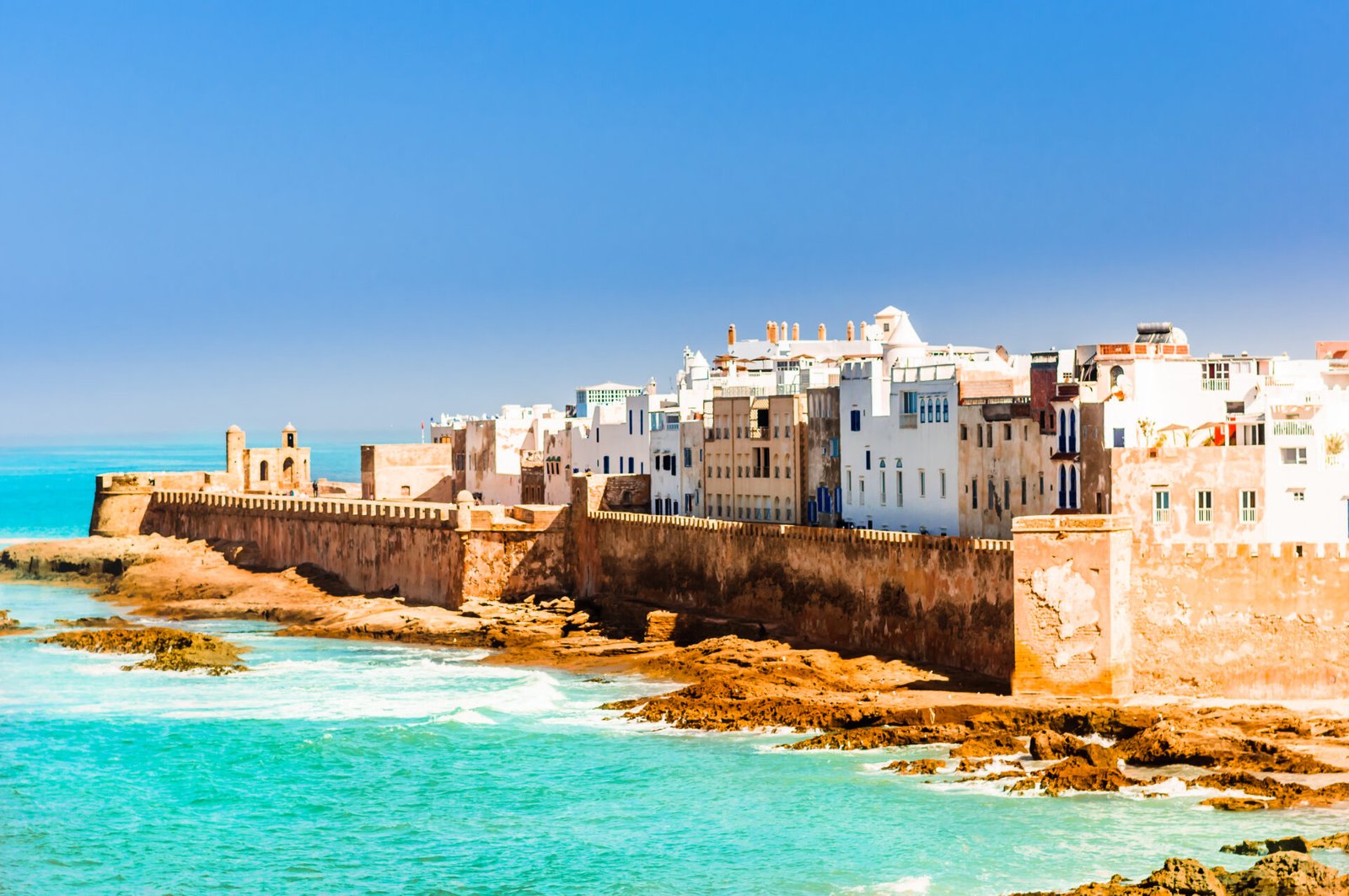Best Time to Visit Morocco: A Seasonal Guide for an Unforgettable Trip
Morocco is a land of diverse landscapes, rich history, and vibrant culture, offering something special in every season. From the golden dunes of the Sahara to the bustling souks of Marrakech, the country’s climate and atmosphere shift throughout the year, shaping the kind of experience travelers can expect. Determining the best time to visit Morocco depends on what you want to do. Spring and autumn bring comfortable temperatures ideal for sightseeing, while summer is perfect for coastal retreats. Winter offers a unique contrast, where visitors can explore snow-capped mountains in the morning and warm desert landscapes by evening.
This detailed seasonal guide will help you plan your trip based on weather conditions, crowd levels, local festivals, and top activities for each time of the year.
We’re available anytime! Contact us on WhatsApp for instant assistance.
1. Spring (March – May): The Ideal Balance for Exploration
Spring is widely considered the best time to visit Morocco due to its mild temperatures, lush landscapes, and vibrant cultural events. This season strikes the perfect balance between pleasant weather and fewer tourist crowds compared to the peak summer months.
Weather and Climate in Spring
Spring temperatures range between 18°C and 28°C (64°F–82°F), offering comfortable conditions for outdoor activities. Coastal cities like Casablanca and Essaouira remain mild, while desert areas like Merzouga are warm during the day and cool at night.
Why Visit Morocco in Spring?
- Comfortable for Sightseeing: Cities like Marrakech, Fes, and Chefchaouen are more enjoyable to explore without the extreme heat of summer.
- Blooming Landscapes: The Atlas Mountains, valleys, and oases are at their most vibrant, creating excellent conditions for hiking and photography.
- Cultural Festivals: The famous Rose Festival in Kalaat M’Gouna celebrates the annual harvest with music, dance, and traditional parades.
Best Things to Do in Spring
- Take a guided trek through the Ourika Valley, where green landscapes and waterfalls make for a refreshing day trip from Marrakech.
- Visit the blue-painted streets of Chefchaouen, which appear even more stunning under springtime skies.
- Experience a luxury desert camp in the Sahara, where temperatures remain comfortable for camel trekking and stargazing.
Travel Tip:
Since spring is a peak season for tourism, it’s best to book accommodations in advance, especially in Marrakech and Fes.
2. Summer (June – August): A Season for Coastal Retreats and Desert Adventures
Summer in Morocco brings high temperatures, particularly in inland cities and the desert. While the heat can be intense, this season is perfect for travelers looking to explore Morocco’s coastline or experience the Sahara under breathtaking night skies.
Weather and Climate in Summer
In cities like Marrakech and Fes, temperatures often exceed 40°C (104°F), making midday exploration challenging. However, coastal areas like Essaouira and Agadir remain cooler due to Atlantic breezes, averaging 22°C to 28°C (72°F–82°F).
Why Visit Morocco in Summer?
- Coastal Destinations at Their Best: Towns like Essaouira, Tangier, and Agadir offer cool sea breezes and vibrant summer festivals.
- Exclusive Desert Experiences: The Sahara may be hot during the day, but the clear night skies and cooler evenings make it a unique experience.
- Lower Prices on Luxury Stays: High-end riads and five-star resorts offer discounts, making summer ideal for travelers looking for premium accommodations at better rates.
Best Things to Do in Summer
- Surf in Taghazout, one of North Africa’s top surfing destinations.
- Enjoy a seafood feast in Essaouira, where fresh catches are grilled in the local markets.
- Explore Rabat’s Mawazine Festival, an internationally renowned music event featuring artists from around the world.
Travel Tip:
For travelers visiting Marrakech or Fes in the summer, it’s best to sightsee in the early morning or late evening to avoid peak heat.
3. Autumn (September – November): A Perfect Season for Cultural and Outdoor Adventures
Autumn is another best time to visit Morocco, offering warm but pleasant weather, fewer crowds, and a mix of cultural and natural attractions. It is particularly ideal for those who want to experience Morocco’s historic sites and outdoor activities without the intense summer heat.
Weather and Climate in Autumn
Temperatures range between 22°C and 32°C (72°F–90°F), making it a great time for both desert excursions and city explorations. The landscapes, still lush from spring, start transitioning into earthy, golden tones.
Why Visit Morocco in Autumn?
- Perfect Conditions for the Sahara: The desert becomes more accessible, allowing for camel treks and luxury camps without the extreme summer heat.
- Harvest Season in Full Swing: The grape harvest in Meknes and the famous Date Festival in Erfoud offer unique cultural experiences.
- Lower Tourist Crowds: Major attractions like the Jardin Majorelle in Marrakech and Volubilis Roman ruins are less crowded.
Best Things to Do in Autumn
- Take a road trip through the Draa Valley, stopping at historic kasbahs and palm-filled oases.
- Enjoy a hot air balloon ride over Marrakech, providing panoramic views of the Atlas Mountains.
- Visit the imperial city of Meknes, home to vineyards and Morocco’s wine industry.
Travel Tip:
For photographers, autumn provides some of the best natural lighting, especially in the desert and the mountains.
4. Winter (December – February): A Unique Blend of Snow and Desert Tranquility
Winter in Morocco is diverse, offering mild temperatures in cities, cool desert experiences, and even snow-capped mountains. It is a season for travelers seeking both relaxation and adventure.
Weather and Climate in Winter
While coastal and inland cities experience temperatures between 10°C and 20°C (50°F–68°F), the Atlas Mountains receive snowfall, making them an ideal destination for winter sports. The Sahara Desert remains cool and comfortable, with crisp, clear skies.
Why Visit Morocco in Winter?
- Skiing in the Atlas Mountains: The Oukaimeden Ski Resort, just a short drive from Marrakech, offers skiing and snowboarding.
- A Quieter, More Authentic Experience: Major tourist sites are less crowded, allowing for a deeper cultural connection.
- Ideal Desert Conditions: The Sahara provides perfect camel trekking weather, with chilly but pleasant nights.
Best Things to Do in Winter
- Stay in a traditional riad in Marrakech, where fireplaces and heated courtyards create a cozy atmosphere.
- Visit Casablanca’s Hassan II Mosque, its stunning architecture framed by crisp winter skies.
- Explore the snow-covered landscapes of Ifrane, often called the “Switzerland of Morocco.”
Travel Tip:
Packing layered clothing is essential, as desert nights and mountain areas can be significantly colder than daytime temperatures.
When is the Best Time to Visit Morocco?
The best time to visit Morocco depends on your travel style and preferences. Spring and autumn offer the most balanced weather for sightseeing and cultural experiences. Summer is perfect for coastal relaxation and desert adventures, while winter provides a unique blend of snow-covered mountains and mild city explorations.
No matter when you visit, Morocco promises an unforgettable journey filled with rich history, breathtaking landscapes, and warm hospitality.
Want priority assistance? Message us on WhatsApp, and we’ll help you right away!



